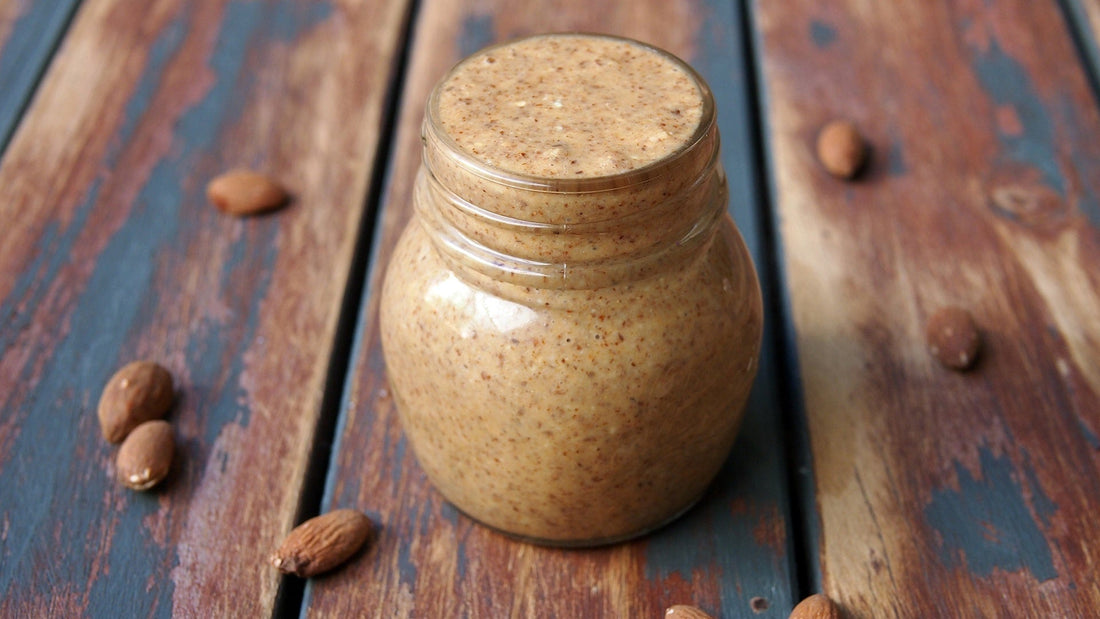Peanut butter is a pantry staple loved for its rich flavor and long-lasting nature-but does it really last forever? In this guide, you’ll discover exactly how long peanut butter lasts, how to spot spoilage, and the best storage methods to keep every jar fresh and delicious.
Does Peanut Butter Go Bad?
Yes-while peanut butter boasts a remarkably long shelf life due to its low moisture and high fat content, it can eventually go rancid, especially when oil turns bitter or stale.
Understanding Peanut Butter’s Composition and Spoilage
Peanut butter’s high fat content and low moisture make it resistant to microbial growth. However, over time, the healthy fats oxidize, causing the peanut butter to develop off-flavors and unpleasant smells.
Differences Between Natural, Organic, and Commercial Peanut Butter
- Commercial peanut butter typically includes stabilizers (like hydrogenated oil or palm oil) and preservatives that extend shelf life.
- Natural or organic peanut butter-which often contains only peanuts and salt-lacks stabilizers, making it more prone to rancidity and oil separation.
Common Causes of Spoilage (Oxidation, Oil Separation, Contamination)
- Oxidation of oils leads to rancid smells and flavor.
- Oil separation is natural in unstabilized products and not a spoilage sign.
- Contamination through moisture or dirty utensils can accelerate spoilage.

Does Peanut Butter Expire?
Expiration Date vs Best-By Date
These dates indicate quality, not safety. Peanut butter may remain safe to eat after its best-by date, but flavor and texture may decline.
Food Safety Guidelines for Expired Peanut Butter
As long as there are no signs of spoilage (smell, texture, mold), processed peanut butter often remains safe well beyond the labeled date.
Shelf Life Variations by Peanut Butter Type
- Commercial: long-lasting due to added stabilizers.
- Natural: shorter quality lifespan due to minimal processing.
How Long Does Peanut Butter Last Unopened?
Commercial Peanut Butter Shelf Life
Unopened jars typically remain fresh for 6–9 months at room temperature, thanks to stabilizers.
Natural and Organic Peanut Butter Shelf Life
They may last several months unopened, sometimes up to a year in refrigeration, but quality declines faster if not chilled.
Storage Conditions for Maximum Freshness
Store unopened peanut butter in a cool, dark, dry place-like a pantry-away from heat or direct sunlight.
How Long Does Peanut Butter Last Opened?
Once a jar of peanut butter is opened, its shelf life depends on the type, storage method, and how it’s handled. Exposure to air, light, and temperature changes begins to slowly degrade the oils, affecting both flavor and texture over time.
Shelf Life by Type After Opening
-
Commercial peanut butter:
- Pantry: Typically lasts 2–3 months after opening without noticeable quality loss.
- Refrigerator: Can remain fresh for 6–9 months or more due to slowed oxidation.
-
Natural or organic peanut butter:
- Pantry: Best consumed within 3–4 weeks after opening because it lacks preservatives.
- Refrigerator: Stays good for 4–6 months, though some oil separation may still occur.
-
Homemade peanut butter:
-
Refrigerator only: Lasts 3–4 weeks; should never be stored at room temperature for extended periods.
-
Factors That Shorten Shelf Life
- Heat exposure: Speeds up oil oxidation and can cause rancidity.
- Moisture contamination: Encourages mold growth.
- Dirty utensils: Introduce bacteria or food particles that accelerate spoilage.
Tips to Maximize Freshness After Opening
- Store in a cool, dry pantry or refrigerator, depending on peanut butter type.
- Always seal the lid tightly after each use.
- Use clean, dry utensils to prevent contamination.
- For natural peanut butter, stir thoroughly after opening to evenly mix the oil and solids, then refrigerate to maintain texture.

How Long Does Homemade Peanut Butter Last?
Why Homemade Peanut Butter Spoils Faster
With no preservatives or stabilizers and exposure to air during preparation, homemade variants degrade more quickly.
Proper Storage Techniques for Homemade Peanut Butter
Keep homemade peanut butter refrigerated in airtight containers and use within several weeks for best quality.
Preserving Flavor and Texture Without Additives
Consider adding just a pinch of salt or using vacuum-sealed containers to help prolong freshness naturally.
How to Tell If Peanut Butter Is Bad?
Peanut butter may last for months or even years, but it won’t stay fresh forever. Knowing the signs of spoilage can save you from an unpleasant snack-or worse, potential foodborne illness.
1. Visual Signs of Spoilage
- Mold Growth: While rare in commercial peanut butter, mold can appear in natural or homemade varieties, especially if moisture gets inside. Any mold means it’s time to discard the jar.
- Color Changes: Darkening or an uneven, streaky appearance may indicate oxidation or exposure to air and light over time.
2. Smell Indicators
- Rancid Odor: A strong, bitter, or paint-like smell is a classic sign of oxidized oils.
- Sour or Musty Notes: Unusual sourness suggests bacterial contamination or mold growth.
3. Taste Changes
- Bitter or Sharp Flavor: Indicates rancidity and loss of freshness.
- Stale or Flat Taste: Means the oils and flavor compounds have broken down, even if it’s not harmful to eat.
4. Texture Differences
- Excessive Hardening: While some firming is normal in refrigerated peanut butter, an overly dry, crumbly texture signals aging.
- Unusual Separation: A thin layer of oil on top is normal in natural peanut butter, but large, thick pools or clumpy solids can suggest quality loss.
Pro Tip: When in doubt, throw it out. Peanut butter is inexpensive compared to the risk of eating spoiled food.

How Long Does Peanut Butter Last After Expiration Date?
Peanut butter often remains safe and enjoyable well past its printed expiration or best-by date-provided it has been stored correctly and shows no signs of spoilage. The fats in peanut butter are stable compared to many foods, but they will eventually degrade, affecting taste and texture.
Typical Time Frames Beyond the Date
- Commercial peanut butter (unopened): Can stay good for 6–12 months past the best-by date if stored in a cool, dark pantry.
- Commercial peanut butter (opened): Usually safe for 3–6 months beyond the date when kept in the pantry, and even longer if refrigerated.
- Natural and organic peanut butter: Best consumed within a few months past the date, especially if refrigerated. Without stabilizers, it’s more prone to rancidity.
Safety vs Quality
While peanut butter past its date is rarely dangerous if there’s no mold or sour smell, the flavor may become bitter or stale. Always rely on sensory checks-look, smell, and taste a small amount before using it in recipes or spreading it on toast.
When to Discard Immediately
Regardless of the date, peanut butter should be thrown away if it develops mold, has a rancid or metallic odor, or shows unusual discoloration. These are clear signs that oxidation or contamination has compromised its quality and safety.
How Long Does Peanut Butter Last in the Fridge?
Refrigeration can significantly extend the shelf life of peanut butter by slowing the oxidation process that causes fats to turn rancid. It also helps preserve freshness, flavor, and nutrients for a longer period compared to pantry storage.
Average Refrigerator Shelf Life
- Commercial peanut butter: Lasts 6–9 months in the fridge after opening, maintaining a consistent taste and texture.
- Natural or organic peanut butter: Can stay fresh for 6 months or more when refrigerated, even after opening, thanks to reduced exposure to heat and light.
- Homemade peanut butter: Typically lasts 3–4 weeks in the fridge due to the absence of preservatives.
Pros and Cons of Refrigerating Peanut Butter
Pros:
- Slows spoilage and rancidity.
- Prevents mold growth in natural varieties.
- Minimizes oil separation in natural peanut butter.
Cons:
- Peanut butter becomes firmer, making it harder to spread straight from the fridge.
- Requires some stirring after chilling to restore smooth texture in natural versions.
Best Storage Practices in the Fridge
- Keep the lid tightly sealed to prevent moisture and odor absorption.
- Use clean, dry utensils to avoid introducing bacteria or mold.
- For easier spreading, let the jar sit at room temperature for 10–15 minutes before use.
Expert Storage Tips to Extend Peanut Butter Shelf Life
Choosing the Right Container and Packaging
Keep peanut butter in airtight, opaque containers to reduce exposure to oxygen and light.
Avoiding Moisture and Heat Exposure
Store jars away from ovens or direct sunlight zones to preserve quality.
Freezing Peanut Butter: Pros, Cons, and Best Methods
Freezing is a great long-term storage option: peanut butter can last up to 1 year in the freezer. Thaw in the fridge or at room temperature before use.
Final Thoughts
Peanut butter-whether commercial, natural, or homemade-offers versatile, nutrient-rich goodness with a notably long shelf life. By understanding how long it lasts unopened and opened, recognizing spoilage signs, and adopting proper storage habits, you can minimize waste, preserve quality, and enjoy your favorite spread with confidence.







